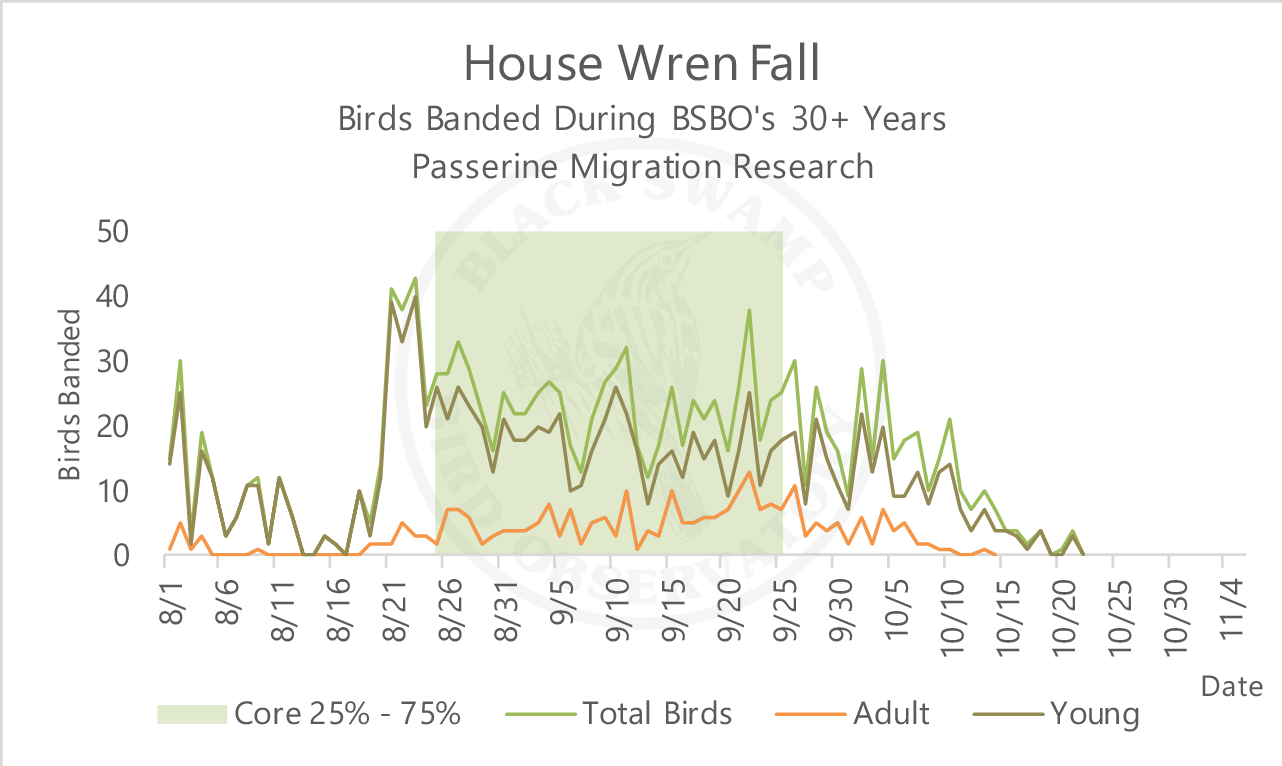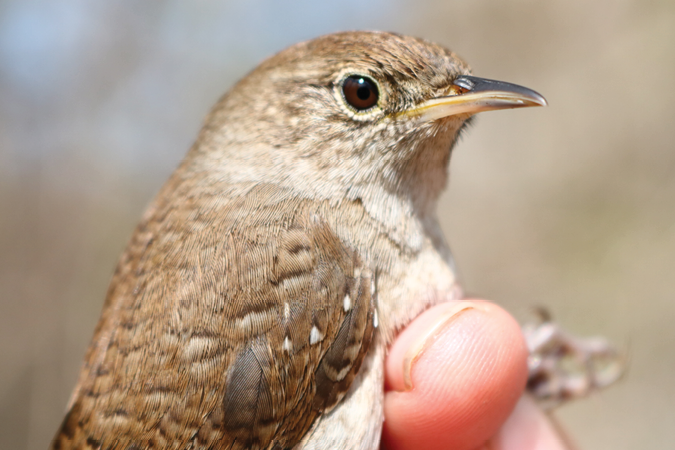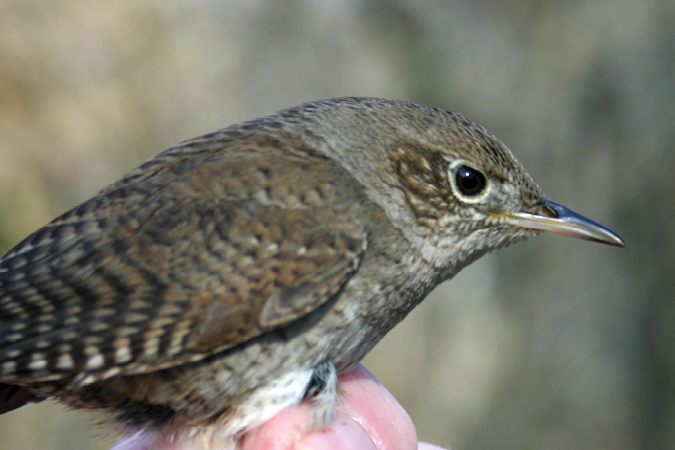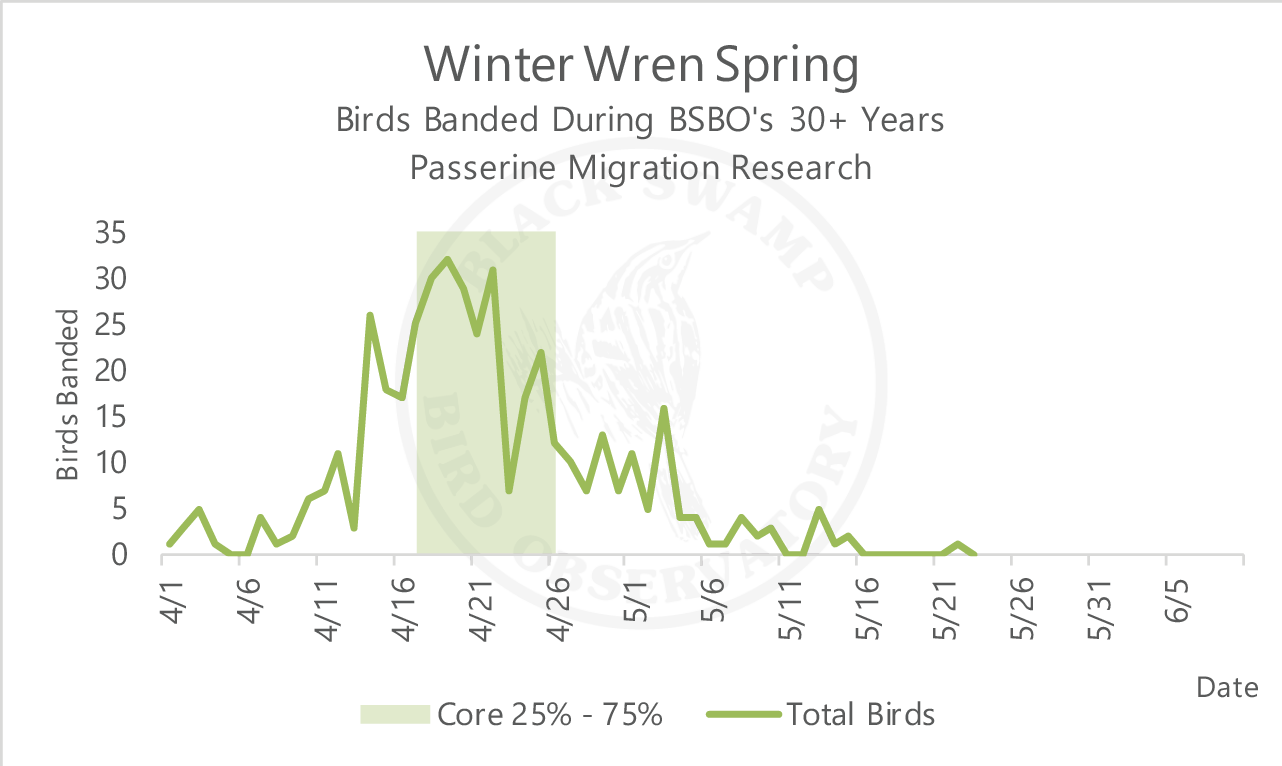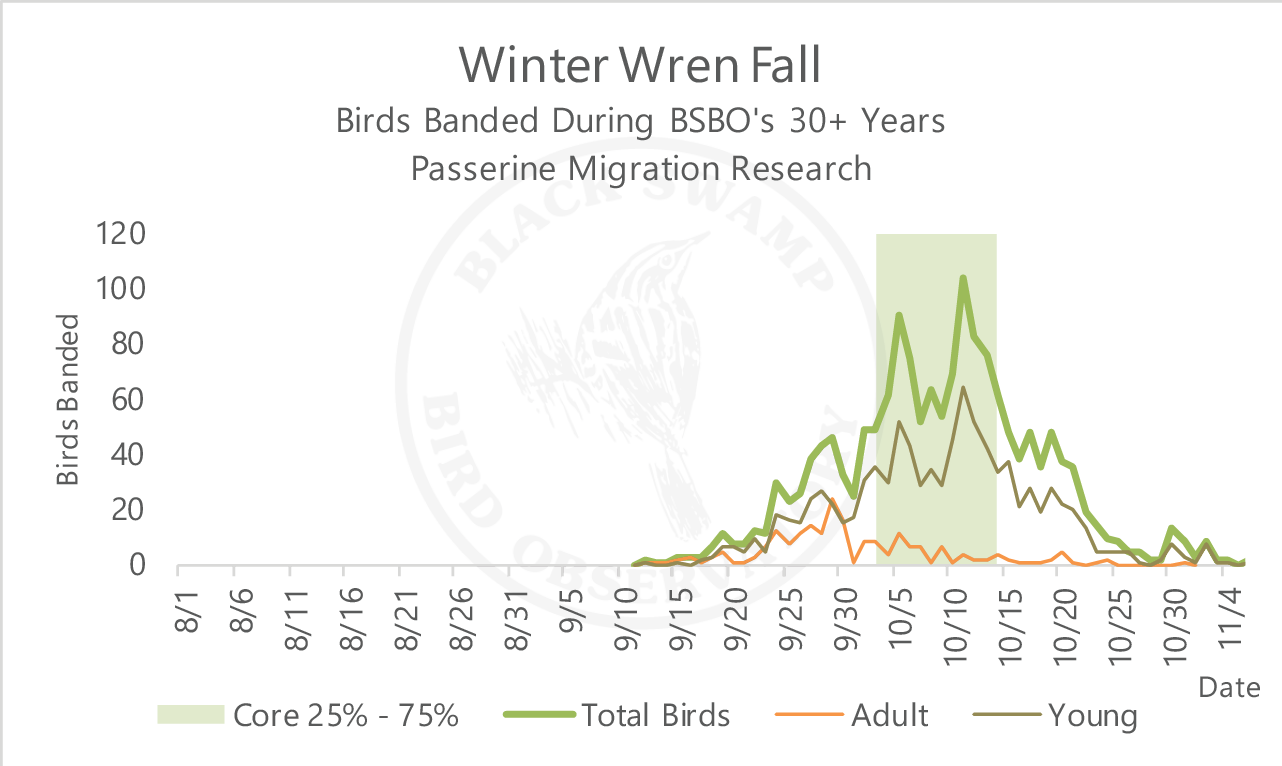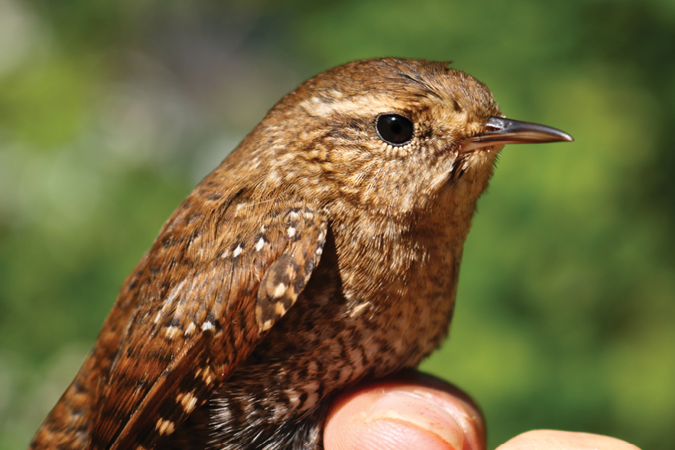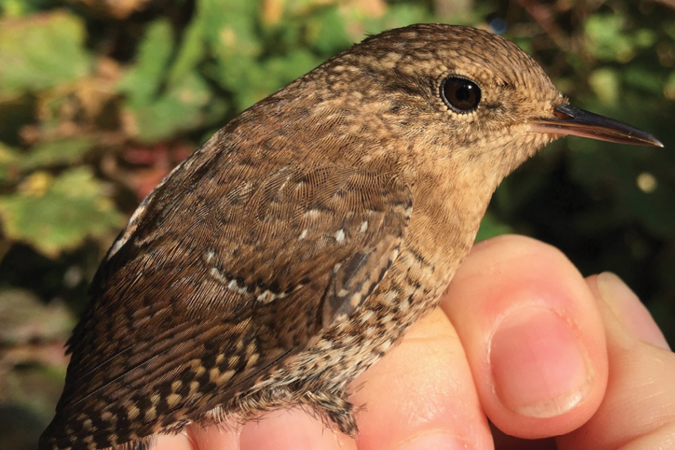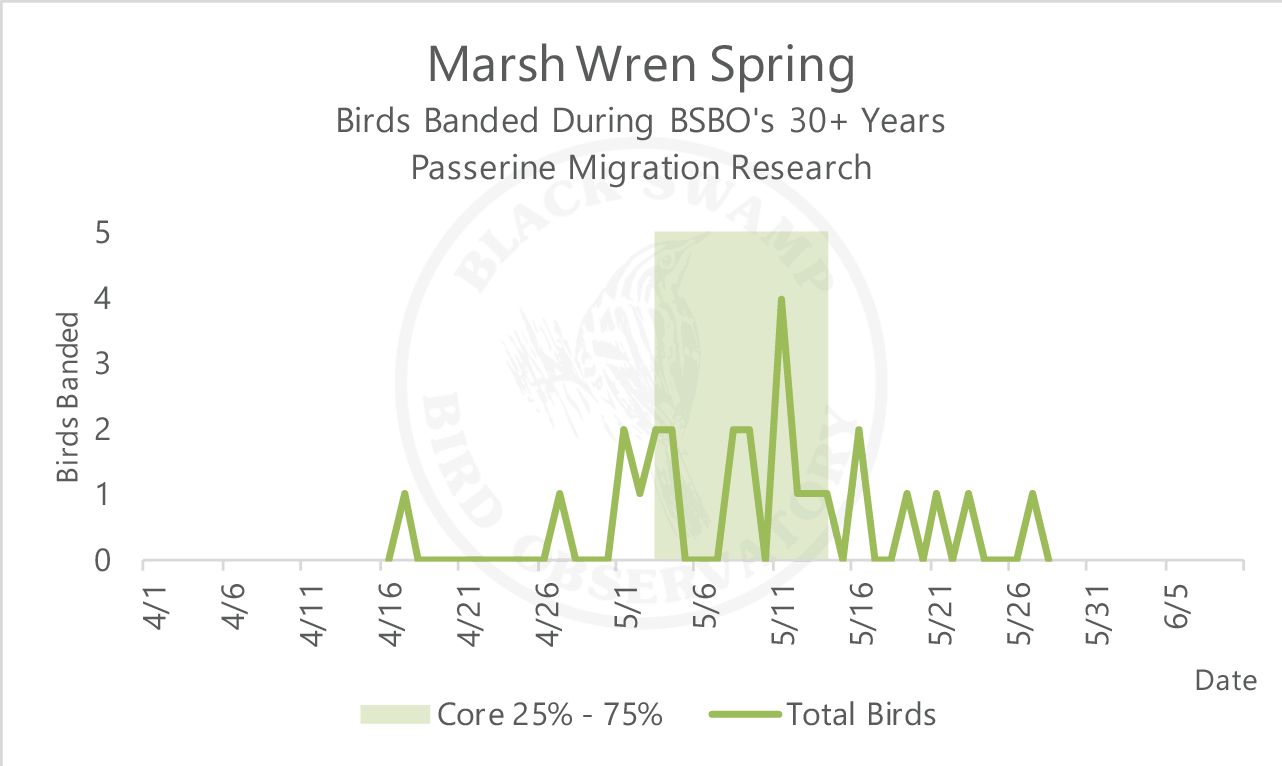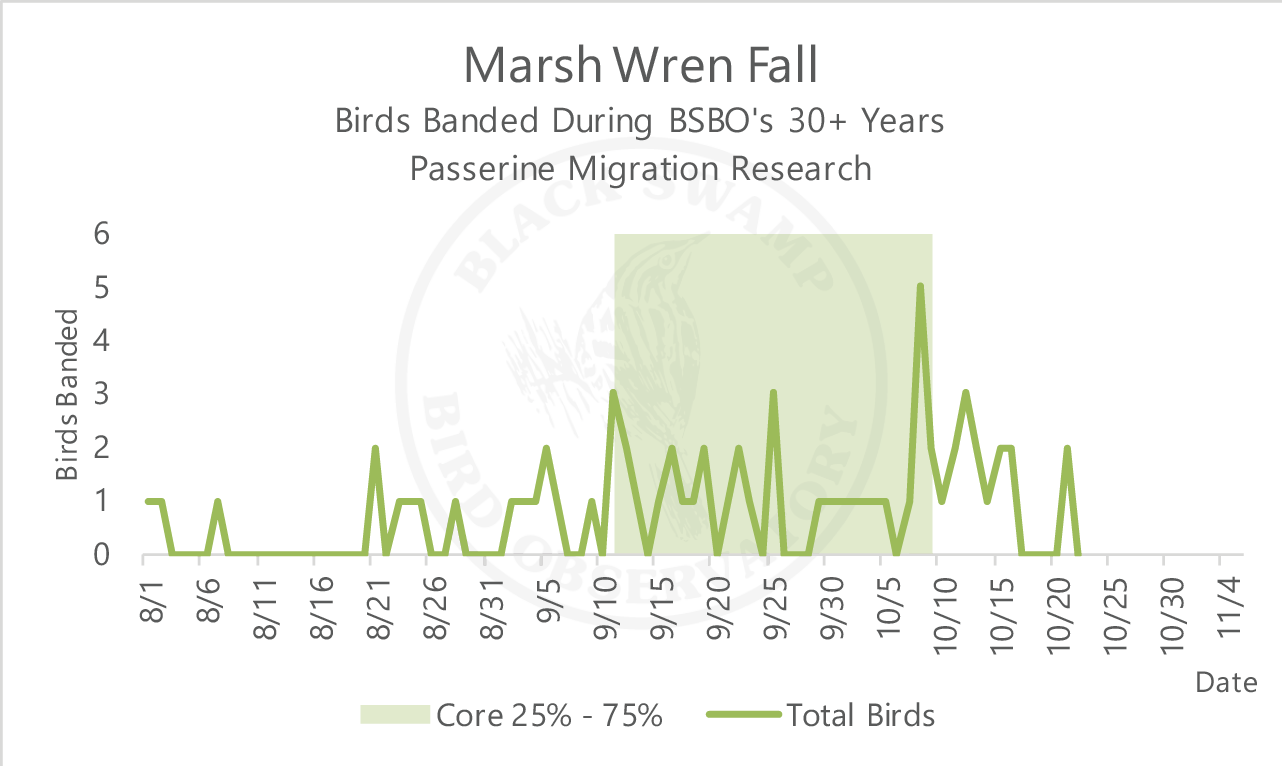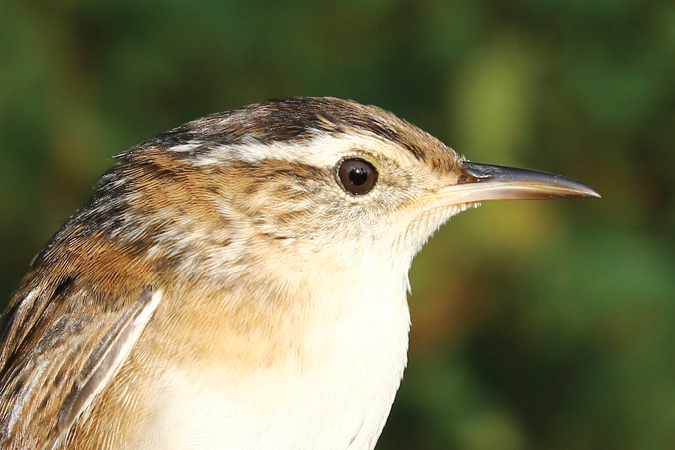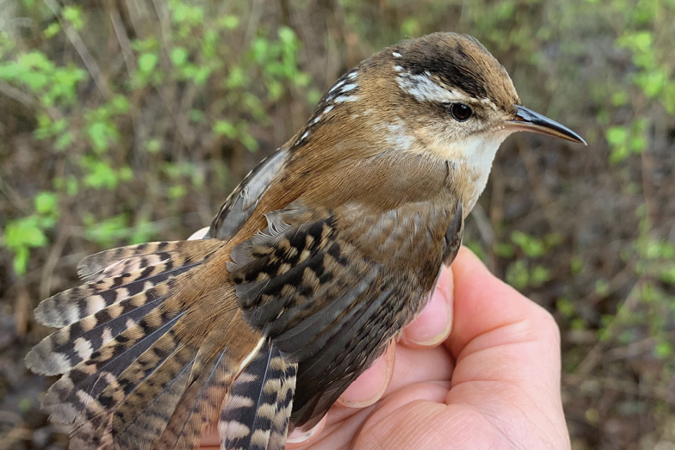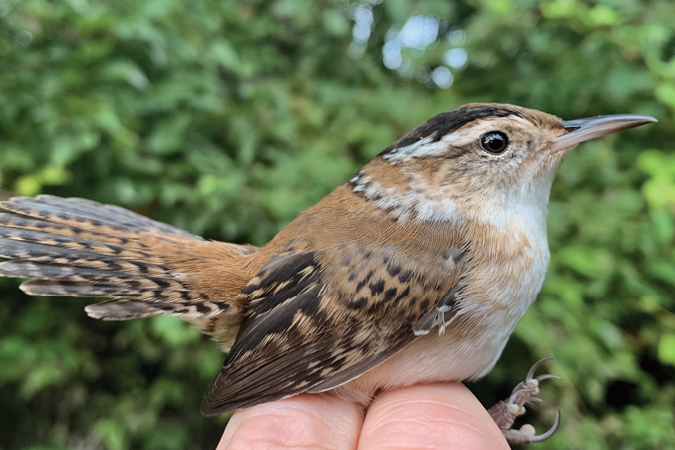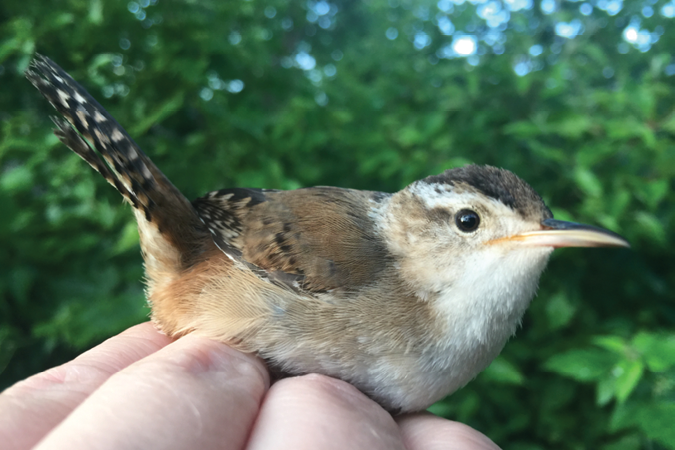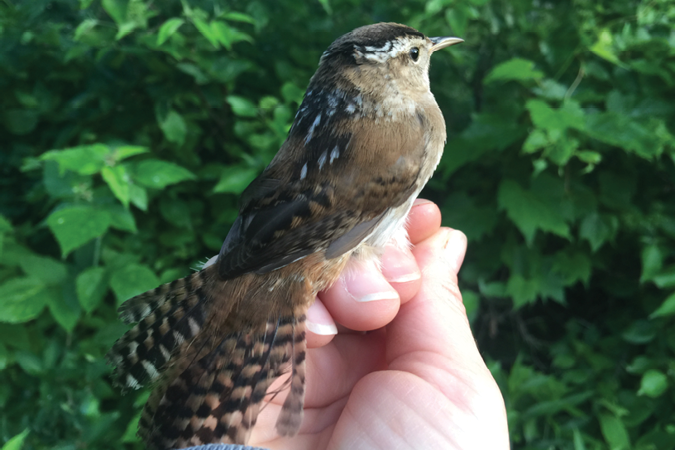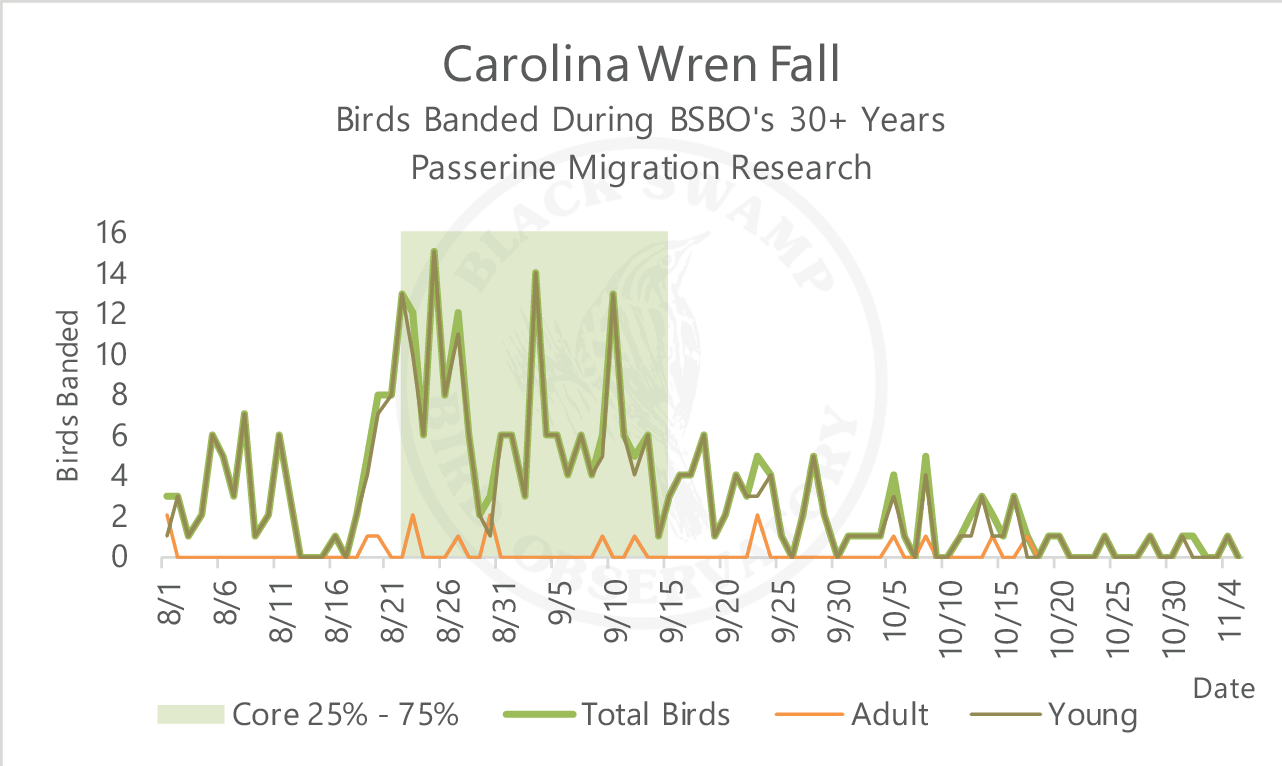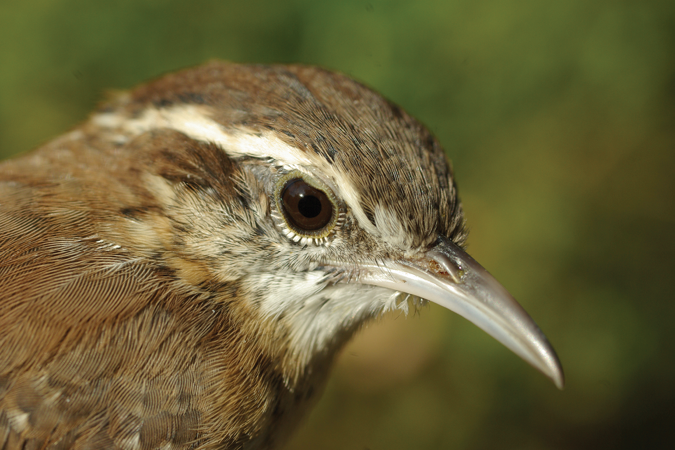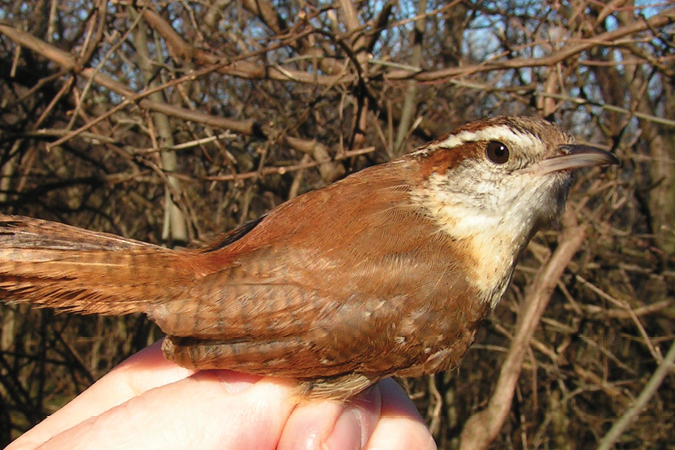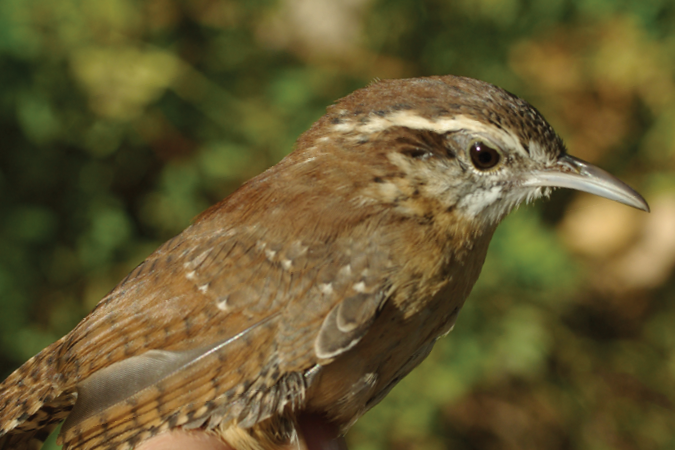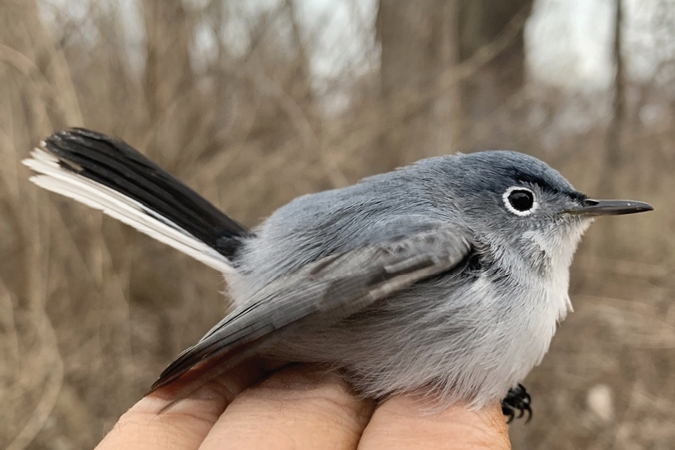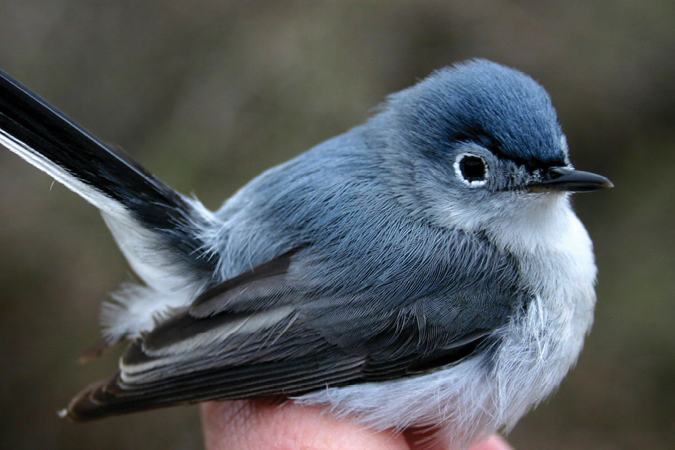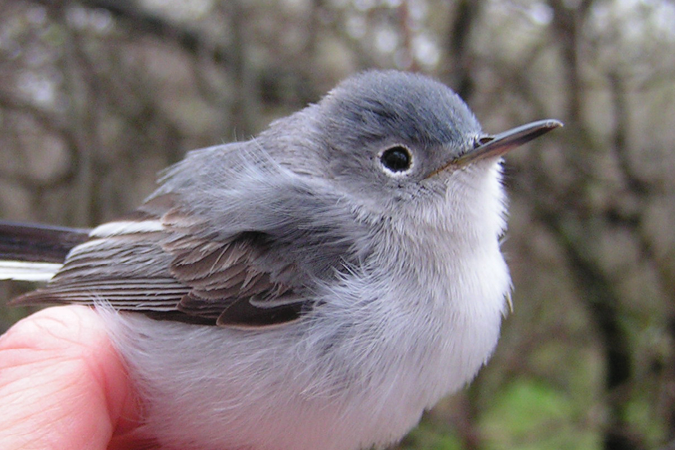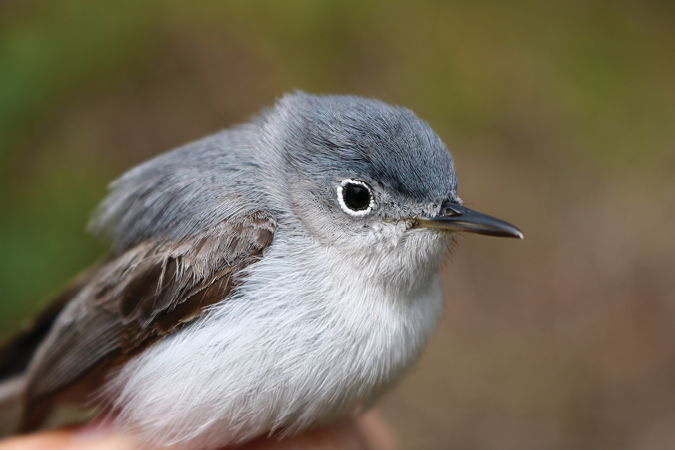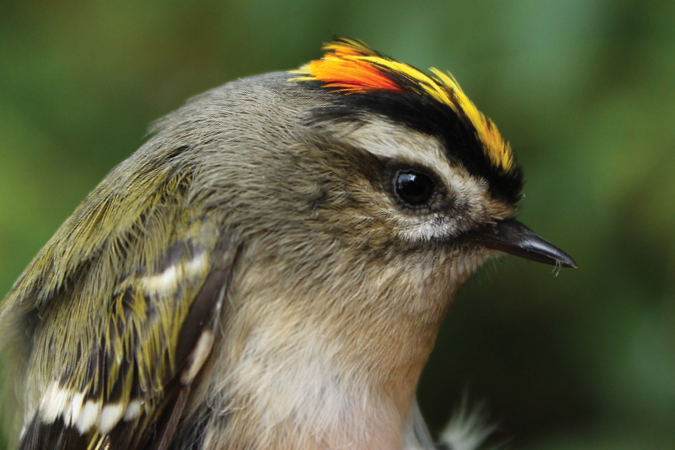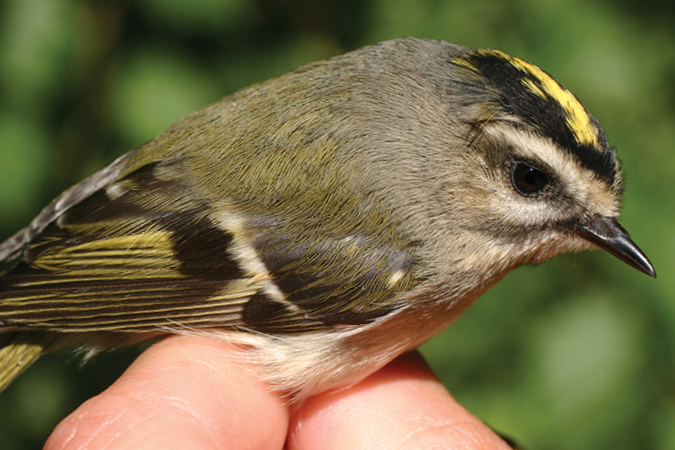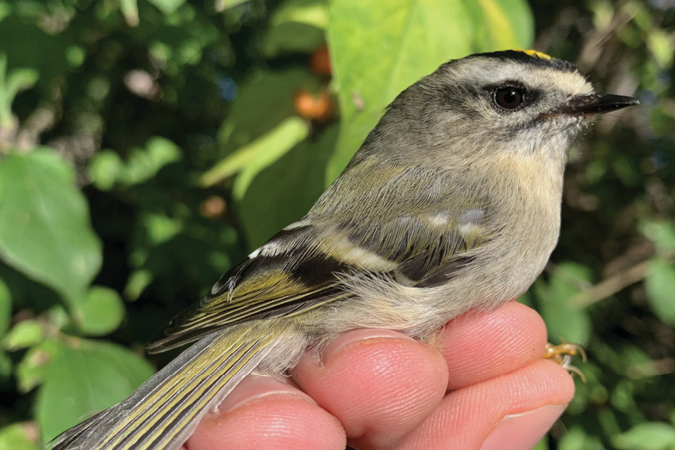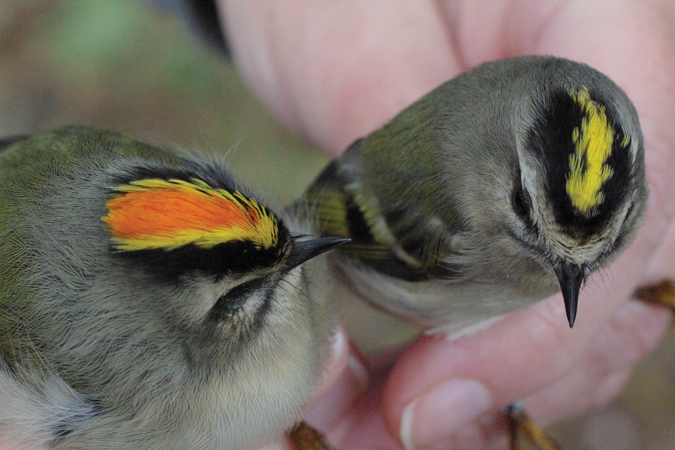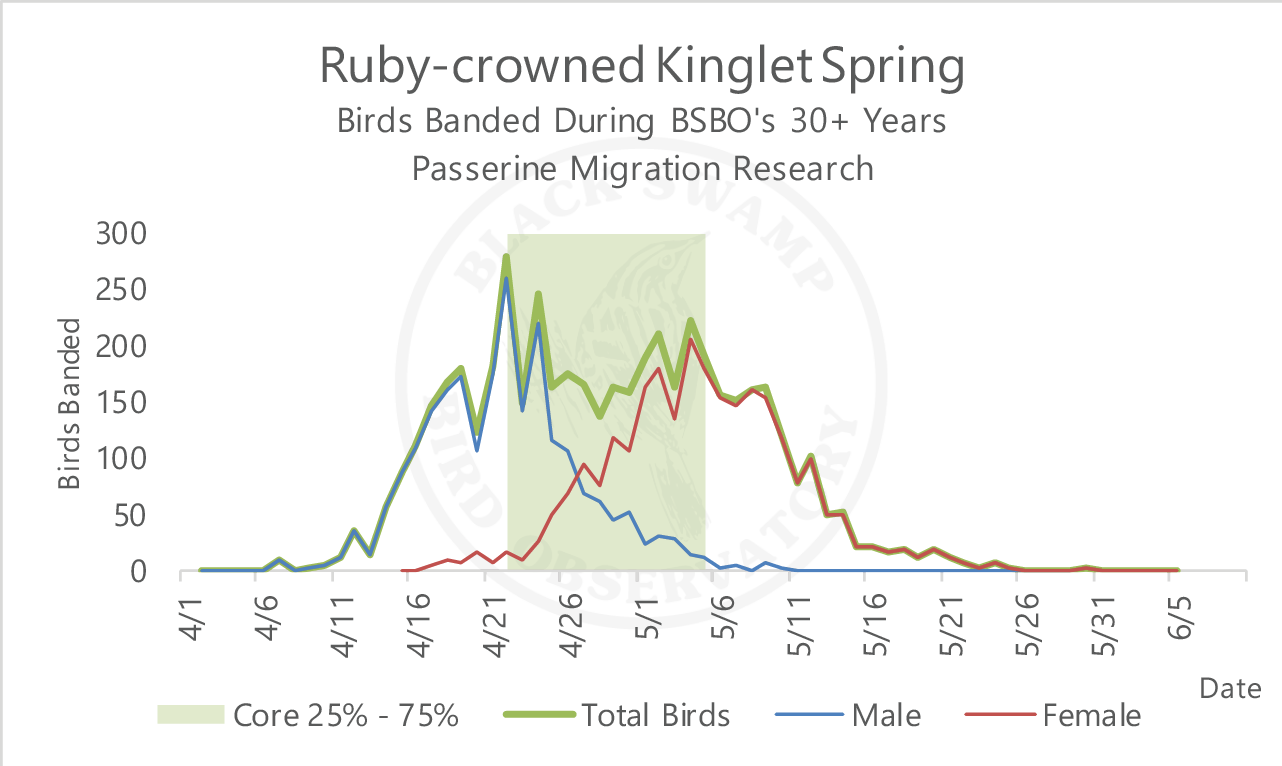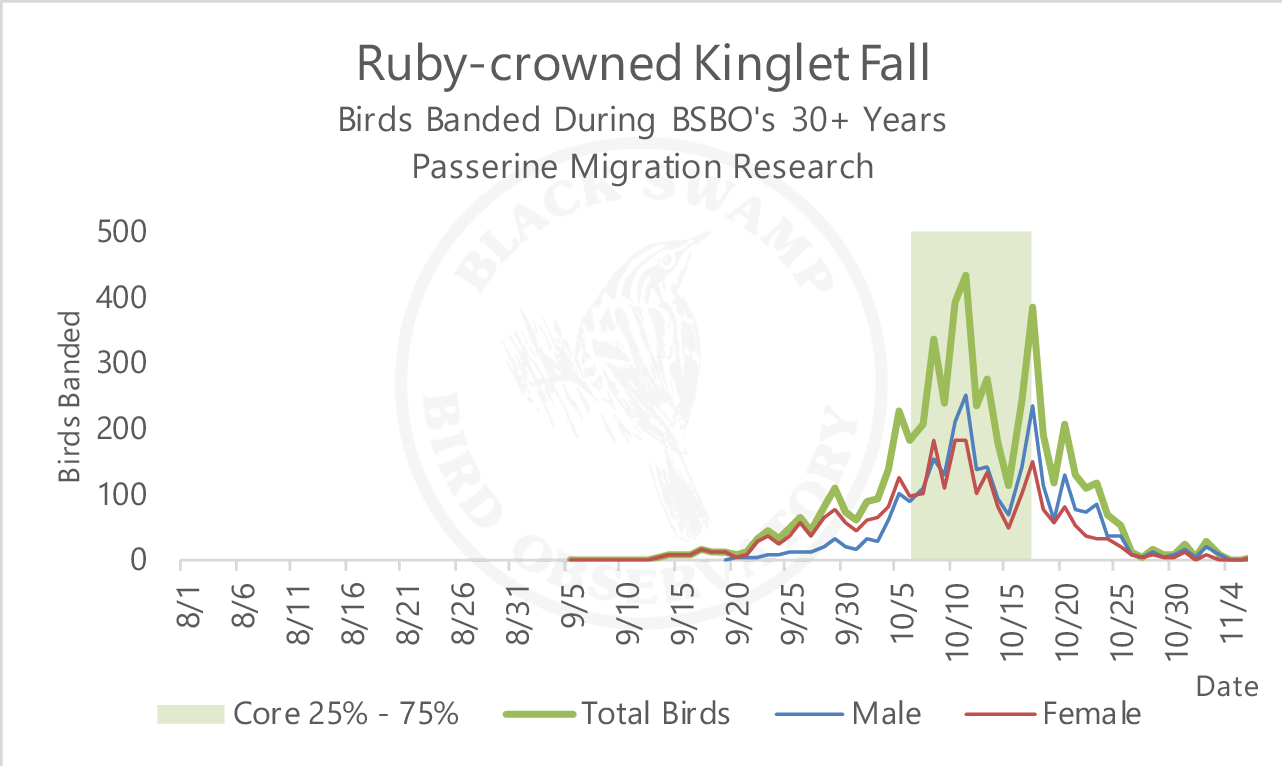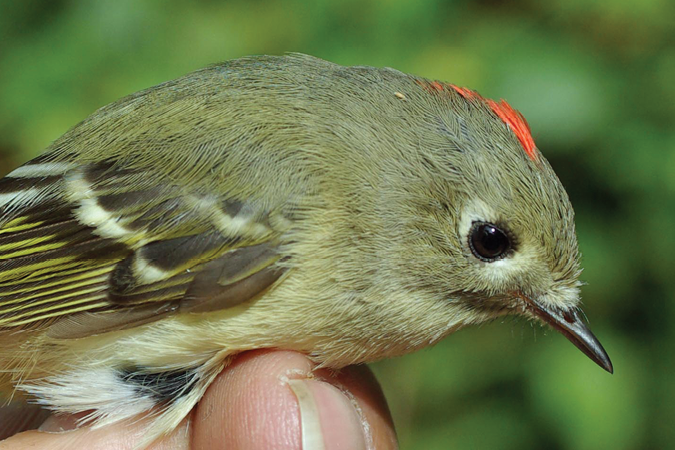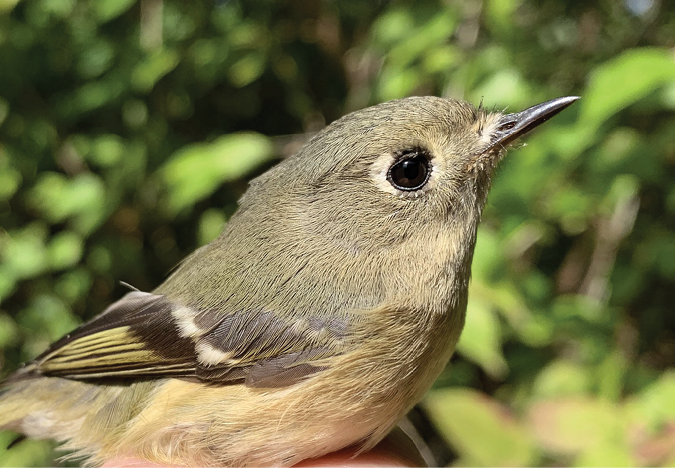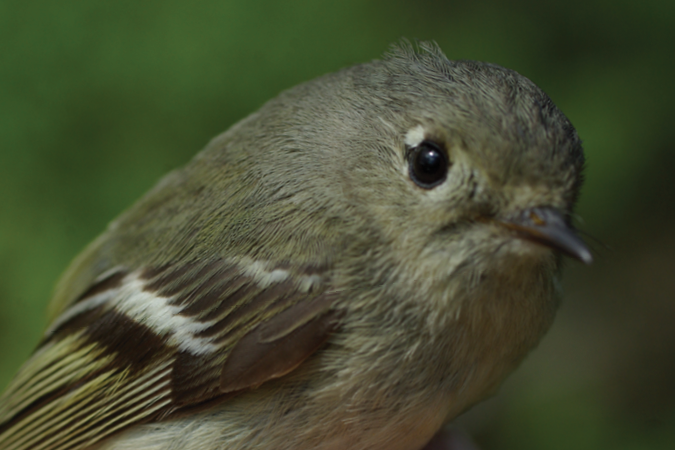Wrens Troglodytidae
about wrens in nw ohio
The Wren family ranges across the migration spectrum from near-resident, to wintering/migrant, to migrant/breeder. Small to medium-small birds with vibrant song repertoire and aggressive behavior, few Ohioans have not heard or encountered at least one of these species near home or in their travels.
While wrens can be found anywhere during migration, they are active on the ground or lower areas within the vegetation where they test even the best observers for a glimpse of these cryptic songsters. Due to identical plumages between male and female, and much overlap in size, limited sexing data are available for each of the wrens presented.
While wrens can be found anywhere during migration, they are active on the ground or lower areas within the vegetation where they test even the best observers for a glimpse of these cryptic songsters. Due to identical plumages between male and female, and much overlap in size, limited sexing data are available for each of the wrens presented.
House Wren Troglodytes aedon
|
Alpha Code: HOWR Spanish: Saltapared Continental French: Troglodyte familier Band Size: 0 ~ 0A NW Ohio Status: Migrant, Breeding Total Banded in Spring: 2,815 Average Banded in Spring: 94 Total Banded in Fall: 1,782 Average Banded in Fall: 61 |
Song: long series of jumbled bubbling mixed with gurgles, rising and then falling
Description: Pale brown above with dark barring on wings and tail, and tannish underparts. Pale throat and pale, indistinct eyebrow. Male and female alike throughout the year Spring Migration Timing: Primarily second wave, with birds steadily rising through late April and the peak of total birds occurring May 1-13. |
Fall Migration Timing: Prolonged, with migrants moving heavily by late August and winding down by mid-October. Peak movement of total birds occurring August 25 through September 26.
Migration Habitat: Common in a wide variety of forested and semi-open areas, usually with dense undergrowth, including open forests, woodlots, neighborhoods, and backyards. |
Winter Wren Troglodytes hiemalis
|
Alpha Code: WIWR Spanish: Saltapared Invernal French: Troglodyte des forêts Band Size: 0A ~ 0 NW Ohio Status: Migrant, Winter-uncommon Total Banded in Spring: 500 Average Banded in Spring: 17 Total Banded in Fall: 1,768 Average Banded in Fall: 61 |
Song: rapid series of whimsical, bell-like notes
Description: Warm brown above with dark barring on wings and tail, lighter brown underparts with paler brown barring. Pale tan-brown throat and eyebrow. Male and female alike throughout the year. Spring Migration Timing: Some movement actually beginning in March, with activity rising by mid-April and the movement of total birds occurring April 17-27. |
Fall Migration Timing: Late, with birds appearing around mid-September and lasting into early November. Peak movement of total birds occurring October 3-15.
Migration Habitat: Primarily dense undergrowth of forests and forests clearings, but also woodlots and brush piles in backyards. |
Marsh Wren Cistothorus palustris
|
Alpha Code: MAWR Spanish: Saltapared Pantanero French: Troglodyte des marais Band Size: 1 ~ 0 NW Ohio Status: Migrant, Breeding, Winter-extremely rare Total Banded in Spring: 28 Average Banded in Spring: <1 Total Banded in Fall: 76 Average Banded in Fall: 3 |
Song: rapid series of squeaky gurgles followed by flat, buzzy trills
Description: Rusty-brown above with dark barring on wings and tail, black and white streaks on back, and pale white-tan underparts. Whitish throat and eyebrow. Obscure, pale brown eyeline. Male and female alike throughout the year. Spring Migration Timing: Mostly second wave, with birds appearing by late April and the peak of total birds occurring May 4-15. |
Fall Migration Timing: Long and protracted, with birds appearing from late August into late October. Peak of total birds occurring
September 11 through October 10. Migration Habitat: Wide variety of marshes but may also use dense vegetation along ponds and ditches. Notes: Far more prevalent in NW Ohio than numbers would suggest as MAWR tend to inhabit vegetation in the marsh, outside the range of capture. Due to the small sample size in fall, separating activity by local staging birds from true migrants is difficult. |
Carolina Wren Thryothorus ludovicianus
|
Alpha Code: CARW Spanish: Saltapared Pantanero French: Troglodyte de Caroline Band Size: 1B ~ 1 NW Ohio Status: Present all year Total Banded in Spring: 113 Average Banded in Spring: 4 Total Banded in Fall: 388 Average Banded in Fall: 13 |
Song: loud, whistled tea-kettle tea-kettle tea-kettle or Germany Germany Germany
Description: Reddish-brown above with dark barring on wings and tail, and buffy underparts. White throat, face, and eyebrow. Thick reddish-brown eyeline. Male and female alike throughout the year. Spring Migration Timing: Present throughout much of spring, with peaks of activity occurring around April 17 and May 28. |
Fall Migration Timing: Present throughout much of fall, with peak activity of total birds occurring August 22 through September 15.
Migration Habitat: Primarily undergrowth of deciduous forests and forest edges, but also dense vegetation in neighborhoods and backyards. Notes: Although generally present all year, many CARW may depart the lake shore region or NW Ohio for winter. Depending on the severity of winter, birds may begin returning in February or March. |
Gnatcatchers Polioptilidae
about gnatcatchers in nw ohio
The Blue-gray Gnatcatcher is the sole representative of its family in eastern North America. With a diminutive mass, weighing in at around 4-5 grams, only the hummingbirds are lighter than the gnatcatcher. With a long tail that nearly equals the length of the body and head, this tiny bird can be found early in migration, looking for insects among the leafless shrubs and trees. Watch for a small dainty bird, flicking its tail and uttering soft cat-like calls or a musical trill reminiscent of the Ruby-crowned Kinglet. This song is often mistaken for late kinglets which should be well north by mid- to late May.
Blue-gray Gnatcatcher Polioptila caerulea
|
Alpha Code: BGGN Spanish: Perlita Azul Gris French: Polioptila caerulea Band Size: 0A NW Ohio Status: Migrant, Breeding Total Banded in Spring: 1,379 Average Banded in Spring: 46 Total Banded in Fall: 0 Average Banded in Fall: - |
Song: assortment of high-pitched, buzzy whistles, chips, and whines
Description: A tiny bird, blue-gray above with whitish underparts. A rather long, black tail with white outer-tail feathers, appearing white from below. Distinct white eyering on a blue-gray face. Male with black “eyebrows.” Females mostly lack this feature, sometimes showing hints of black. Spring Migration Timing: First wave, with birds arriving by mid-April, and peak numbers occurring from April 22 through May 2. Most birds have either passed through or settled into breeding territories by mid-May. |
Fall Migration Timing: Insufficient data to graph.
Migration Habitat: Utilizes an array of deciduous woodlands and thickets at mid- to canopy levels. Notes: Being at the northern edge of the BGGN breeding range and the early departure of these birds (by August) very few are encountered after July. There could also be a resistance to crossing Lake Erie in fall, further reducing migrants along the lake shore in NW Ohio. |
Kinglets Regulidae
about kinglets in nw ohio
The Kinglet family includes two of our smallest passerines migrating through the region. Though weighing less than 8 grams per individual, these are hardy little packages of energy. Both species are early short-distance migrants with many individuals wintering in Ohio.
Kinglets can be found nearly anywhere during migration, but especially where there are adequate shrub layers in the habitat. Unlike many of the other graphs presented here, aging data for kinglets is unavailable for fall. Only in the past decade have micro-ages been determined for kinglets during BSBO's banding operations and including this recent data alongside total numbers may not be truly representative of each age class' movements throughout our 30 year history.
Kinglets can be found nearly anywhere during migration, but especially where there are adequate shrub layers in the habitat. Unlike many of the other graphs presented here, aging data for kinglets is unavailable for fall. Only in the past decade have micro-ages been determined for kinglets during BSBO's banding operations and including this recent data alongside total numbers may not be truly representative of each age class' movements throughout our 30 year history.
Golden-crowned Kinglet Regulus satrapa
|
Alpha Code: GCKI Spanish: Reyezuelo de Corona Dorada French: Roitelet à couronne dorée Band Size: 0A NW Ohio Status: Migrant, Winter Total Banded in Spring: 1,832 Average Banded in Spring: 61 Total Banded in Fall: 7,267 Average Banded in Fall: 251 |
Song: series of high-pitched see calls accelerating in pace, often ending with a high-pitched trill
Description: A tiny songbird with olive-green upperparts, light-grayish underparts, white facial markings, and one white wingbar. Wings and tail contain bold, yellow-green markings. Both sexes show a yellow crown bordered by black, but males show a streak of orange within the yellow (often concealed). Spring Migration Timing: An early short-distance migrant, with activity actually beginning in March. Peak movements in April occurring 11-20, with most birds departing by May 1. |
Fall Migration Timing: Late and condensed. Birds begin to appear by late September, with peak numbers occurring from October 7-17. Some movement may continue into early November.
Migration Habitat: Often found foraging mid-level in a variety of woodland areas including backyards. Notes: Due to their short-distance migration, many GCKI pass through NW Ohio in March, before the banding season. The true peak of GCKI spring migration may actually be closer to the beginning of April or late March. |
Ruby-crowned Kinglet Corthylio calendula
|
Alpha Code: RCKI Spanish: Reyezuelo de Corona Roja French: Roitelet à couronne rubis Band Size: 0A NW Ohio Status: Migrant, Winter-uncommon Total Banded in Spring: 6,304 Average Banded in Spring: 210 Total Banded in Fall: 5,999 Average Banded in Fall: 207 |
Song: a few high pitched whistles abruptly transitioning into a sputtering warbler of assertive phrases see see see syoo syoo syoo chifferty chifferty chifferty
Description: A small bird, olive-green above with lighter olive underparts, and a bold white eyering. Wings and tail contain bold, yellow-green markings, and a black bar sits behind a single white wingbar. Males with a tiny, ruby crown that is typically concealed unless agitated. Spring Migration Timing: First into second wave. Birds begin to show up by mid-April, with peak numbers reaching NW Ohio from April 22 through May 5. Most birds have left the area by mid-May. |
Fall Migration Timing: Birds begin to noticeably appear by late September, with peak numbers occurring from October 6-17. Lower numbers continue to pass through until late October into early November.
Migration Habitat: Typically found foraging mid-level in a variety of woodlands and thickets including backyards. |

